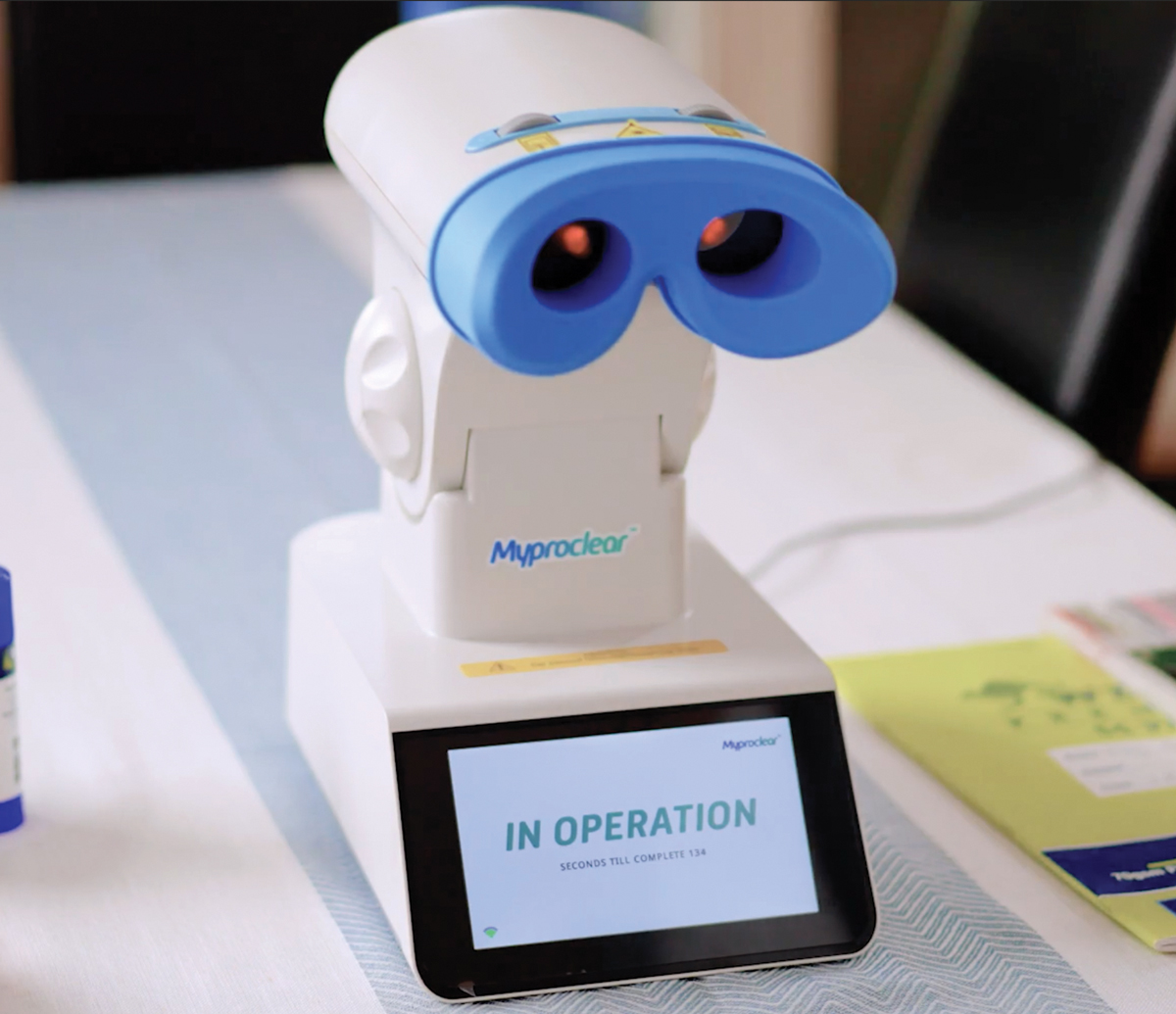 |
|
A new study in the British Journal Ophthalmology reports that children with myopia who underwent repeated low-level red light treatment had a delayed axial length elongation of 0.38mm on average at 12 months, suggesting a stronger effect that some other interventions. The therapy also reduced the incidence of myopia in pre-myopic children but not as markedly. Photo: Eyerising International. Click image to enlarge. |
As the myopia epidemic continues to increase—projected to be 49.8% of the population by 2025—the need for intervention methods is urgent. Current therapies available in the US include low-dose atropine, orthokeratology and multifocal contact lenses; however, these aren’t ideal for every patient, whether due to cost, comfort or side effects. Internationally, eye doctors have access to more options, one of which is repeated low-level red light (RLRL) therapy, the subject of much research of late. A growing body of literature indicates that it’s successful and convenient, though recent questions about long-term risks have cast a pall on the intervention.
A new study published in the British Journal Ophthalmology bolsters the positive findings of RLRT and explores its effect on pre-myopic children, which hadn’t been thoroughly studied previously. Conducted in China, the study included 144 children with a mean age at baseline of 9.19 ±1.23 years who were divided into four groups: myopia-RLRL, myopia-control, premyopia-RLRL and premyopia-control. All subjects underwent RLRL treatment for 12 months consisting of three-minute sessions twice daily.
An RLRL device consists of semiconductor laser diodes that deliver low-level red light with a wavelength of 650nm at an illuminance level of approximately 1600 lux through an undilated pupil to the fundus. Subjects in the study were able to take the device home. To ensure compliance, the date and time of treatment sessions were automatically captured by the device and transferred to the server via internet connection. The final results of the study include only those who remained and completed a minimum 75% compliance rate.
At the study’s conclusion, spherical equivalent (SE) and axial length (AL) changes were as follows:
| Myopes | Pre-myopes | ||
| Cases | Controls | Cases | Controls |
SE refraction | -0.078D ±0.375 | -0.861D ±0.556 | -0.181D ±0.417 | -0.521D ±0.436 |
Axial length | 0.033mm ±0.123 | 0.415mm ±0.171 | 0.145mm ±0.175 | 0.292mm ±0.128 |
Among the pre-myopia subjects, those treated with RLRT showed a lower myopia incidence (defined as myopia detected in those who didn’t have myopia at baseline) than controls, at 2.5% vs 19.4%.
When considering treatment effect in the myopia vs. pre-myopia control groups, the study found higher AL and SE among myopes, as would be expected, yet for those undergoing therapy the delay in axial elongation was greater for those who were already myopic.
The authors correlate this to the homeostatic mechanisms that occur in childhood, when the eye grows toward emmetropia. “In this study, after RLRL treatment, the pre-myopic children had lower efficacy than the myopic children. We speculate that myopia prevention and control interventions may interfere with homeostasis. Based on this assumption, the homoeostatic effect could develop in two ways, which holds both axial elongation and shortening amplitude from changing too much,” they wrote in their journal article on the results.
The lack of appropriate sham conditions was one of the study’s limitations, said the authors. “Second, this study didn’t include choroid-related data, which may have a role in explaining the differences in treatment effects between the myopic and pre-myopic subgroups,” they wrote. “In addition, this study didn’t evaluate the time course of a short-term rebound in AL after treatment discontinuation.”
Overall, the success of RLRL in myopia control is hard to deny, but further research is needed to evaluate its difference of effect in those who are pre-myopic so that clinicians better understand where it fits in a myopia management regimen. Considering that myopia prevention methods also include spending time outdoors and reducing near work—two recommendations that frequently meet with resistance—the study authors say red light therapy is likely to be convenient for children and their families. “RLRL treatment’s effectiveness, intervention method and convenience (twice daily for three minutes each time) make it a promising emerging myopia prevention method likely to be accepted by many participants and their families,” they stated.
Liu G, Rong H, Liu Y, Wang B, Du B, Song D, Wei R. Effectiveness of repeated low-level red light in myopia prevention and myopia control. Br J Ophthalmol. April 17, 2024. [Epub ahead of print]. |


